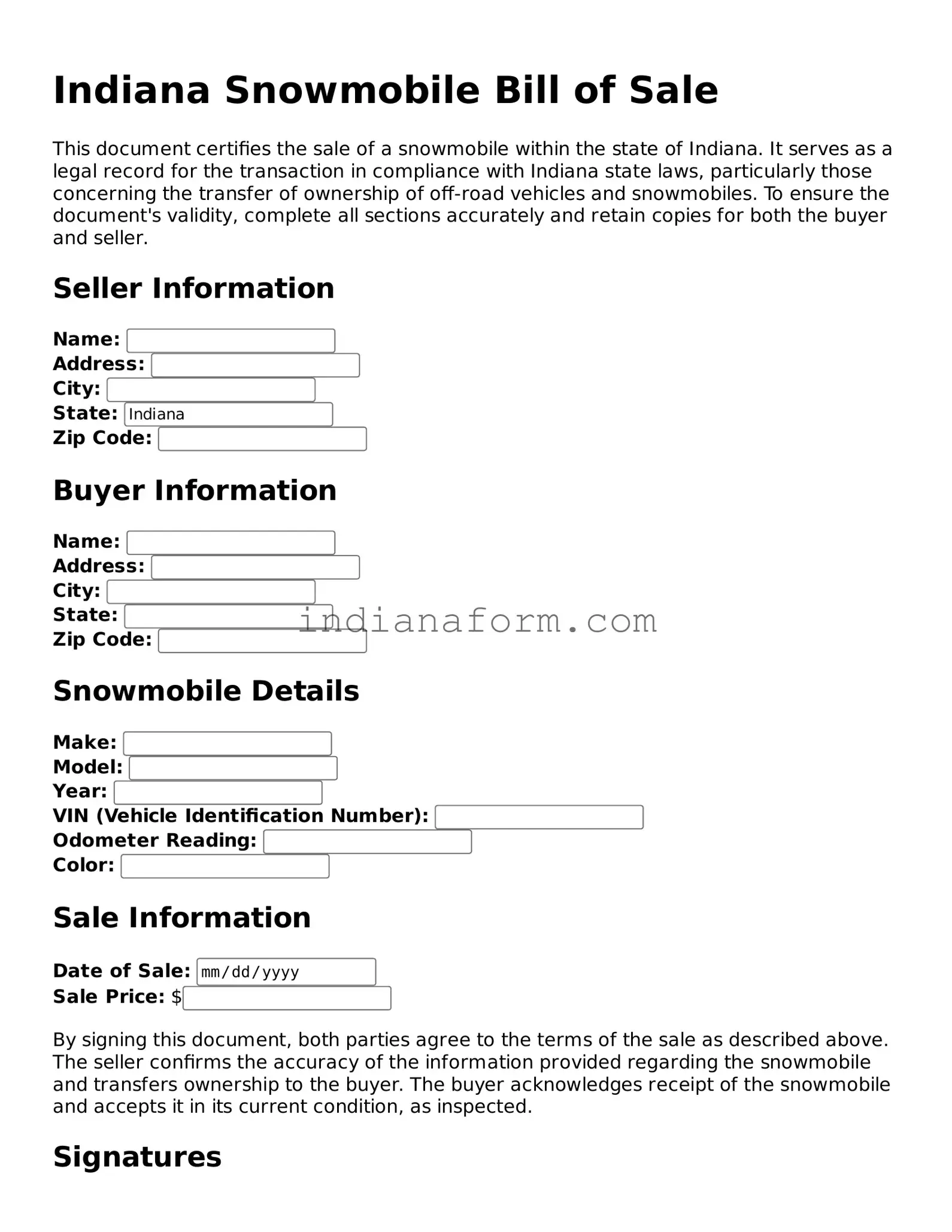What is an Indiana Snowmobile Bill of Sale?
An Indiana Snowmobile Bill of Sale is a legal document that records the sale and purchase of a snowmobile between a seller and a buyer in the state of Indiana. It serves as proof of ownership transfer and includes details such as the make, model, year, and the vehicle identification number (VIN) of the snowmobile, as well as the names and signatures of both parties involved in the transaction.
Why is it important to have a Snowmobile Bill of Sale in Indiana?
Having a Snowmobile Bill of Sale is important because it legally documents the transaction and establishes a new ownership of the snowmobile. It is useful for registration, taxation, and personal record-keeping purposes. Furthermore, it provides legal protection for both the buyer and the seller in case of disputes, claims, or discrepancies related to the sale.
What information is typically included in a Snowmobile Bill of Sale form?
A typical Snowmobile Bill of Sale form includes the date of the sale, the full names and addresses of the seller and the buyer, the sales price, and a detailed description of the snowmobile (including make, model, year, color, and VIN). It also contains statements regarding the warranty status of the snowmobile and the signatures of both parties.
Do both parties need to sign the Indiana Snowmobile Bill of Sale?
Yes, for the document to be considered valid and legally binding, both the seller and the buyer must sign the Indiana Snowmobile Bill of Sale. Their signatures confirm that they agree to the terms of the sale and that the information provided is accurate.
Does an Indiana Snowmobile Bill of Sale need to be notarized?
While not always required, having the Snowmobile Bill of Sale notarized can add an extra layer of legal protection and authenticity to the document. It is advisable to check with local regulations or consult with a legal professional to determine whether notarization is necessary for your specific situation.
Can I create an Indiana Snowmobile Bill of Sale form myself?
Yes, you can create an Indiana Snowmobile Bill of Sale form yourself as long as it contains all the necessary information required to make it legally binding. However, using a professional template or consulting with a legal professional can help ensure that the document complies with state laws and includes all relevant details.
What happens if I lose my copy of the Snowmobile Bill of Sale?
If you lose your copy of the Snowmobile Bill of Sale, it's important to contact the other party involved in the transaction and request a copy. Keeping a digital backup of the document is also a good practice. If recreating the document becomes necessary, make sure to include all original details and have both parties re-sign it.
Is a Snowmobile Bill of Sale the same as a title?
No, a Snowmobile Bill of Sale is not the same as a title. The Bill of Sale is a transaction record that documents the transfer of ownership. A title, on the other hand, is an official government-issued document that legally establishes an individual as the owner of the vehicle. In Indiana, you may need to present the Bill of Sale to obtain a title for your snowmobile.
Where can I find a template for an Indiana Snowmobile Bill of Sale?
Templates for an Indiana Snowmobile Bill of Sale can be found online through legal document websites, state government resources, or by consulting with a legal professional. Ensure that any template you use is compliant with Indiana state laws regarding the sale of snowmobiles.
